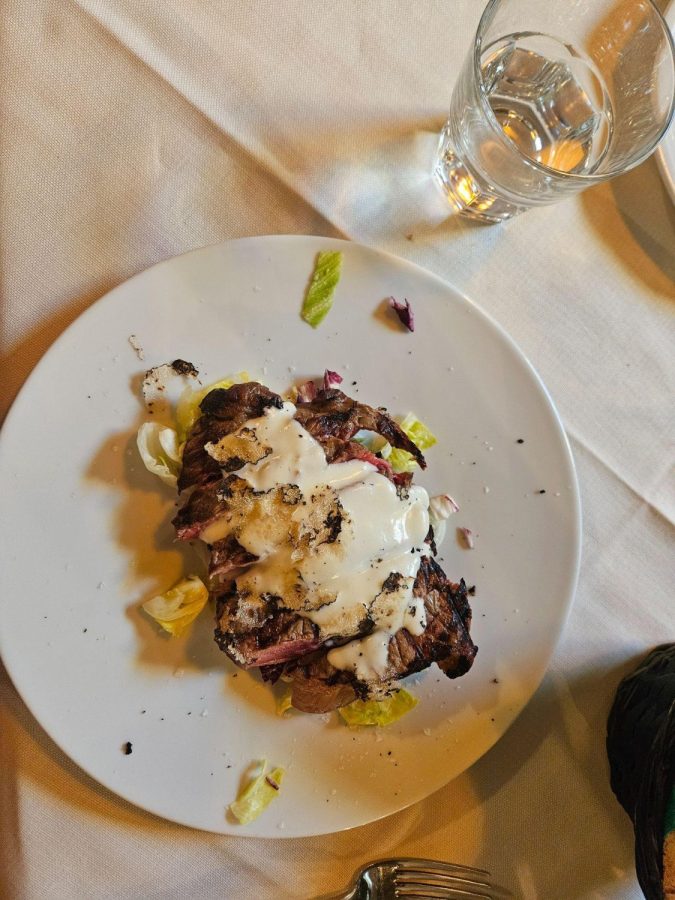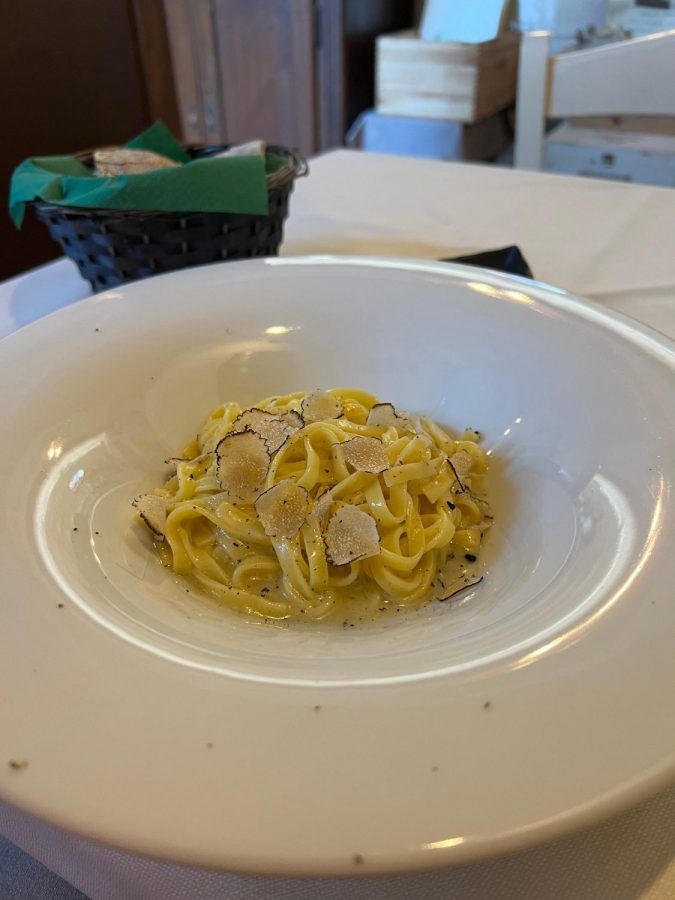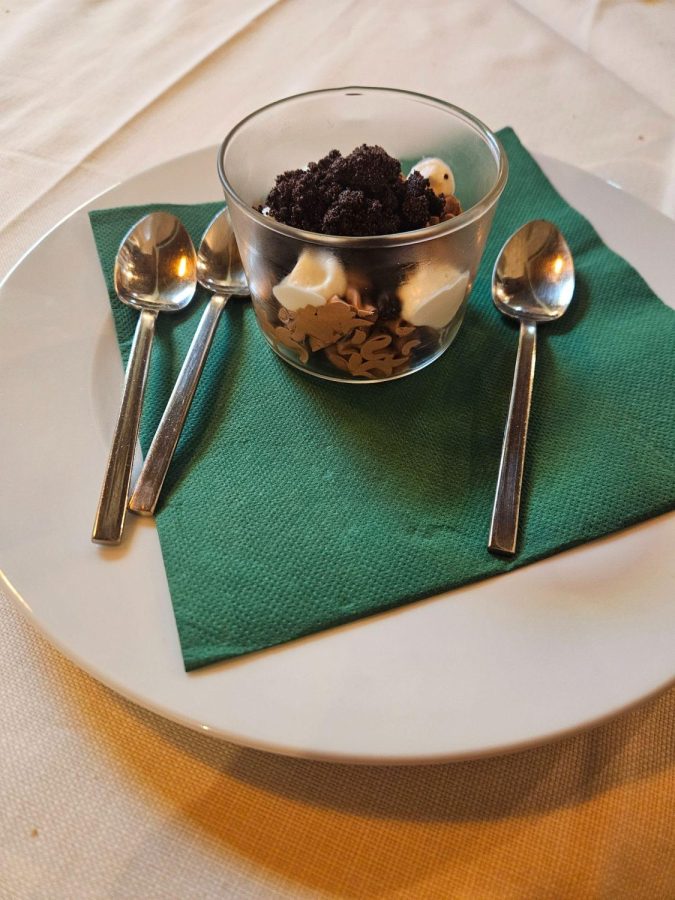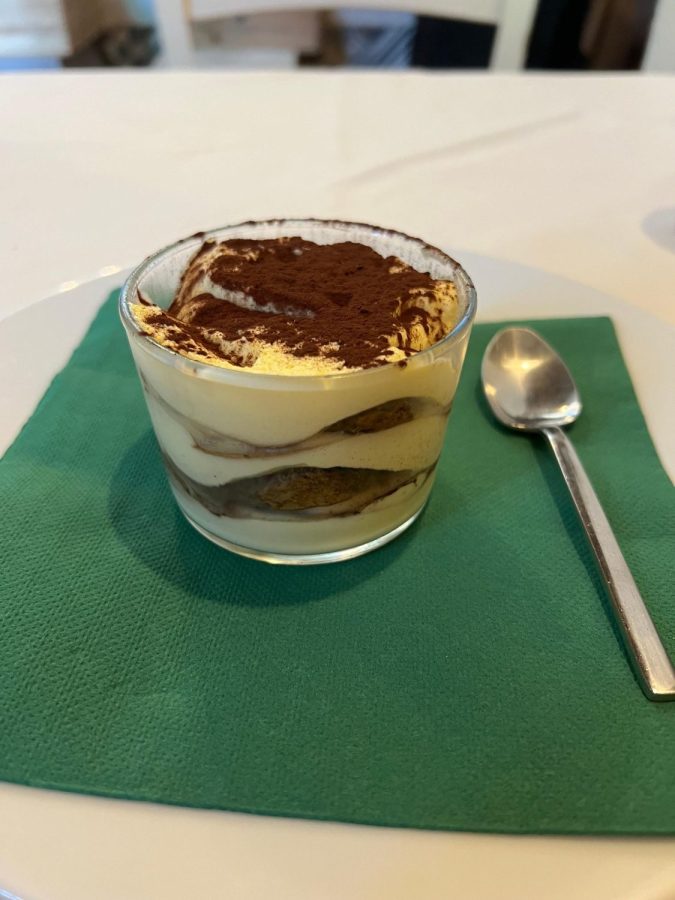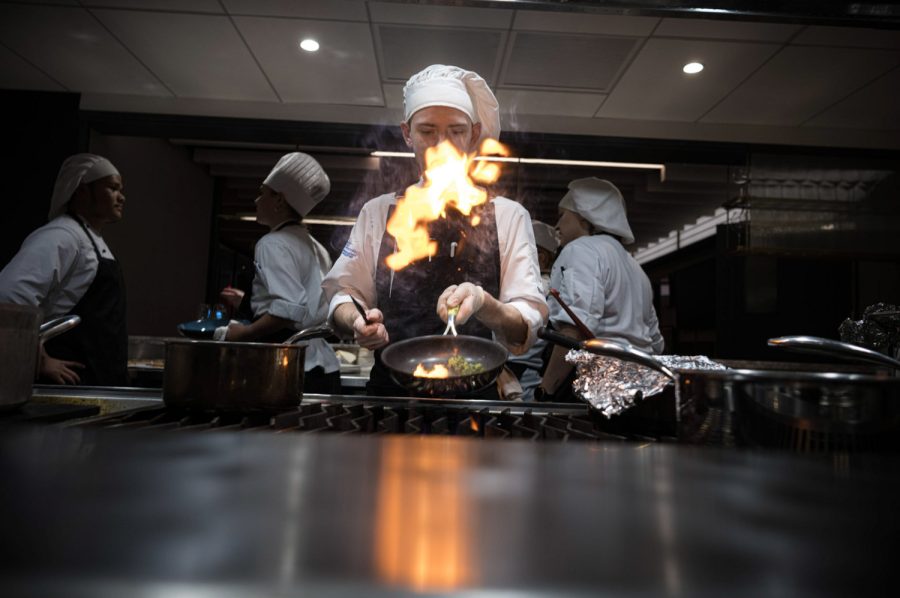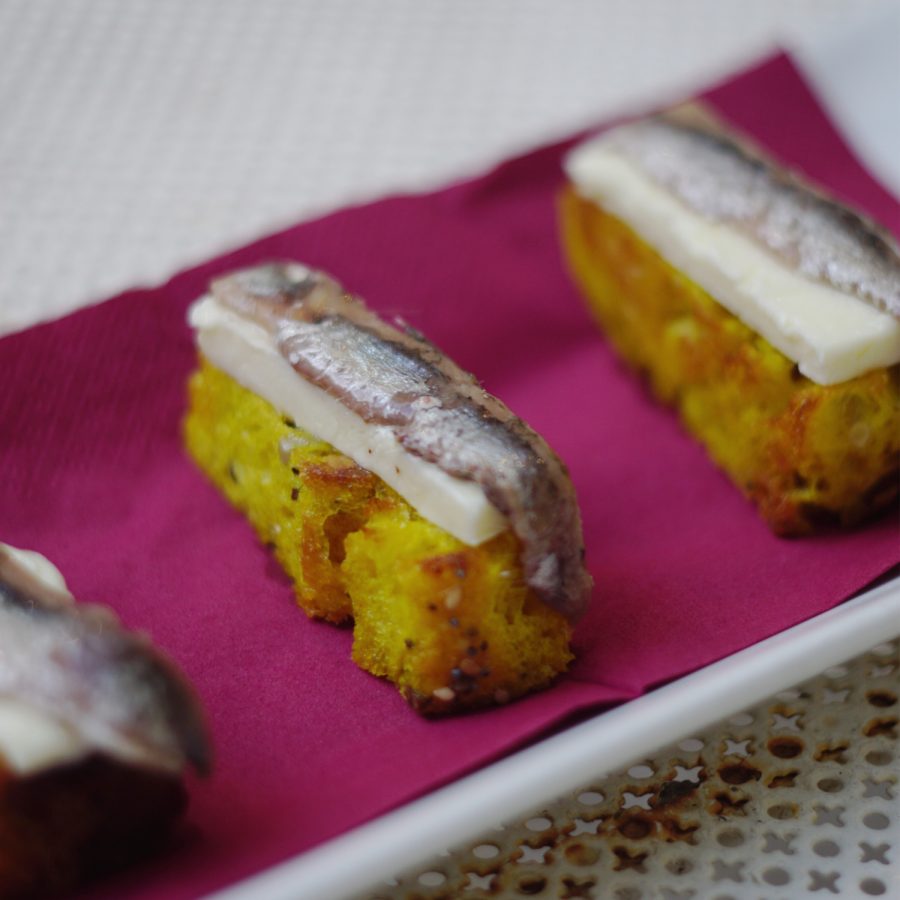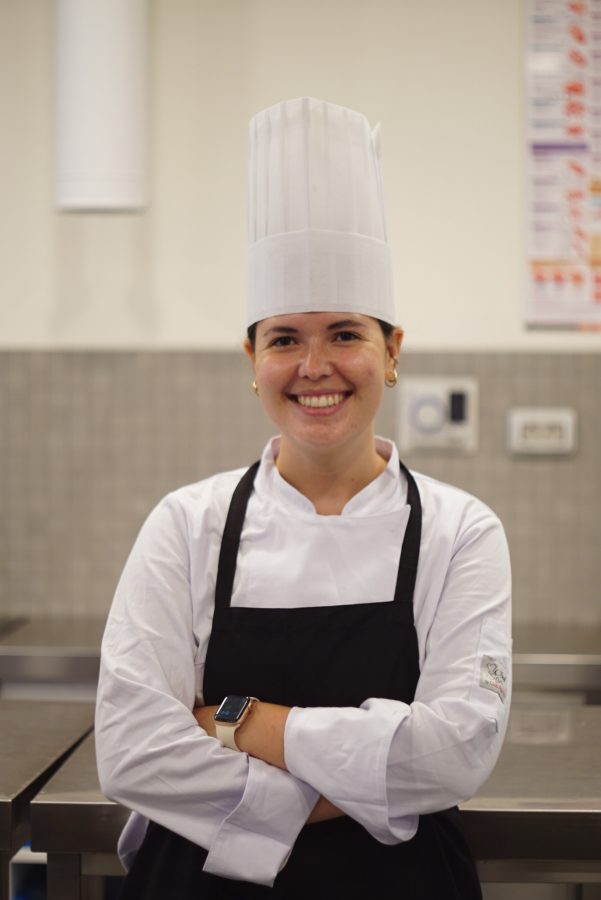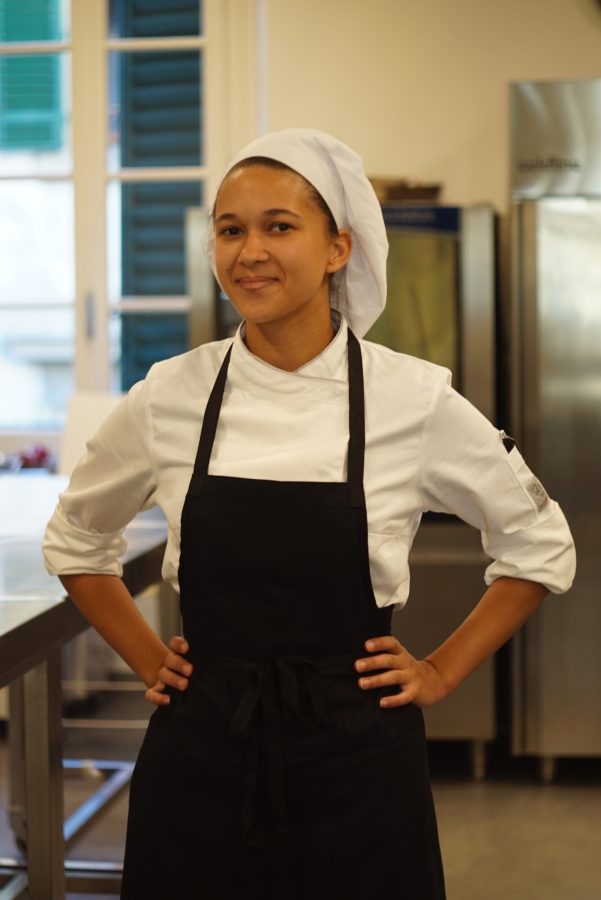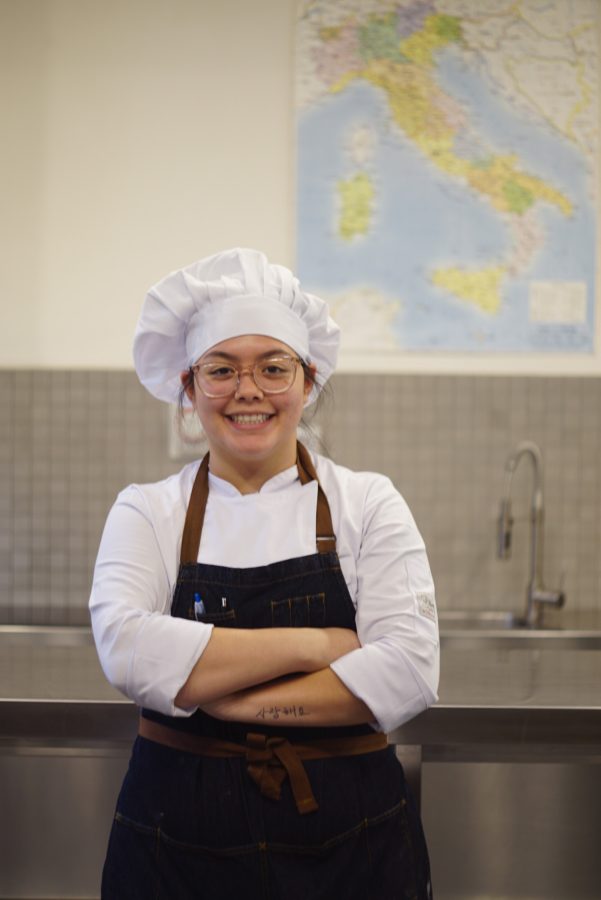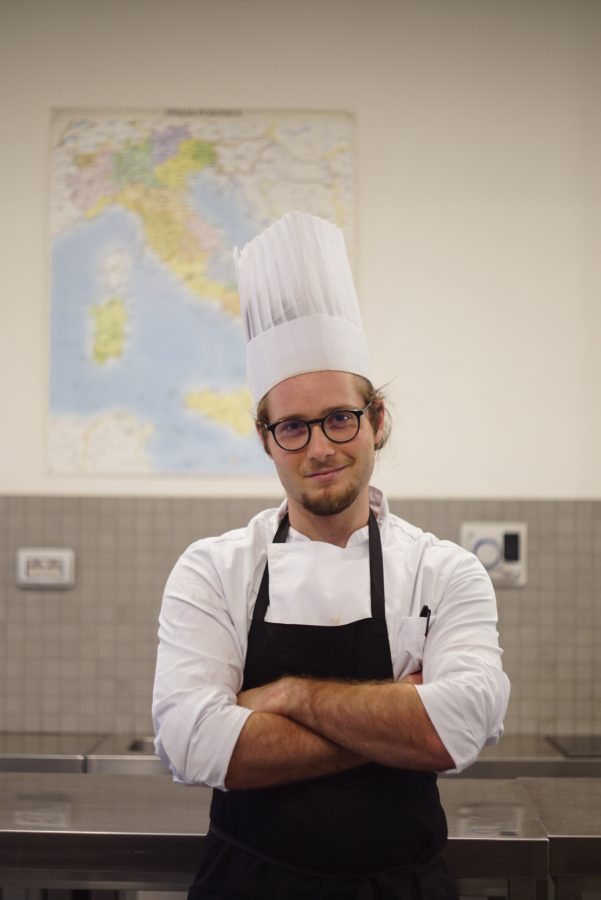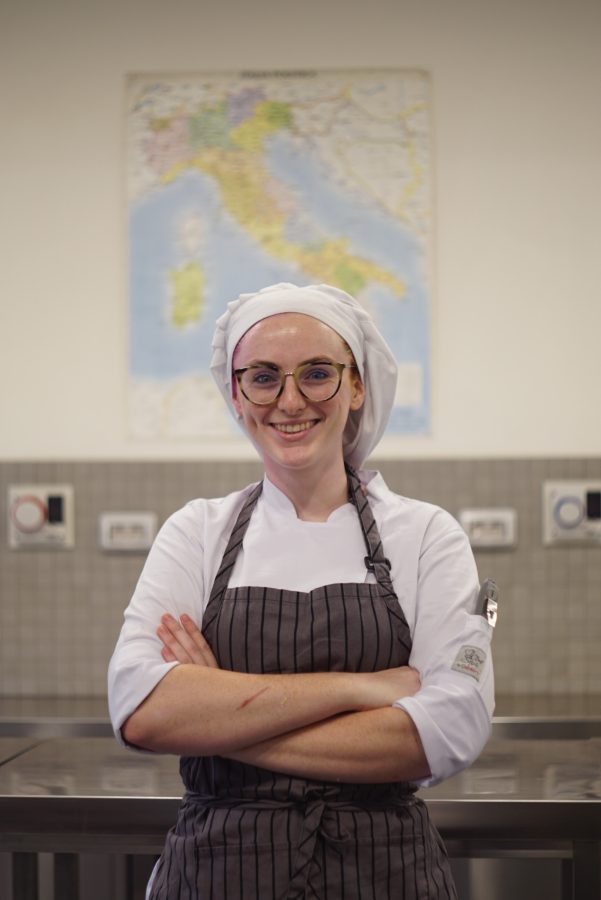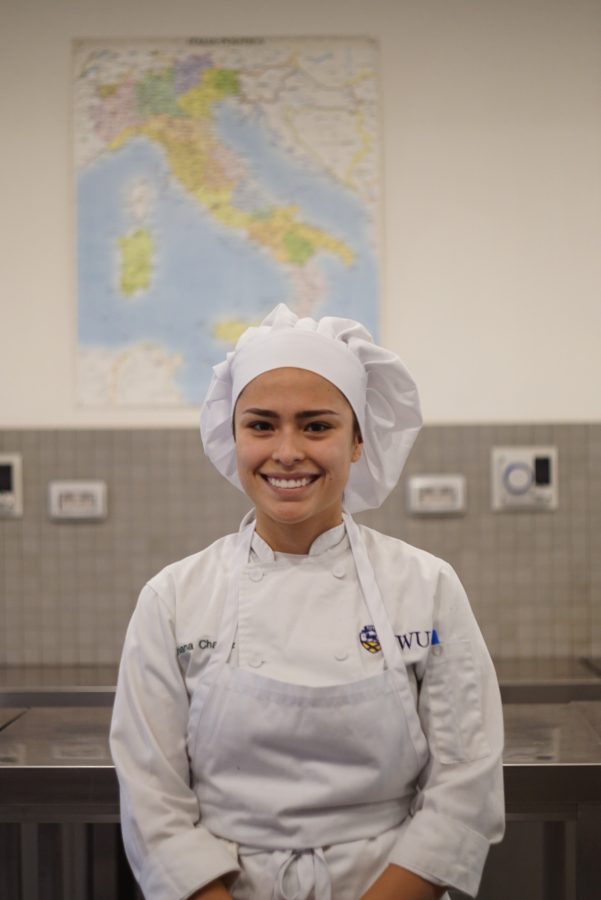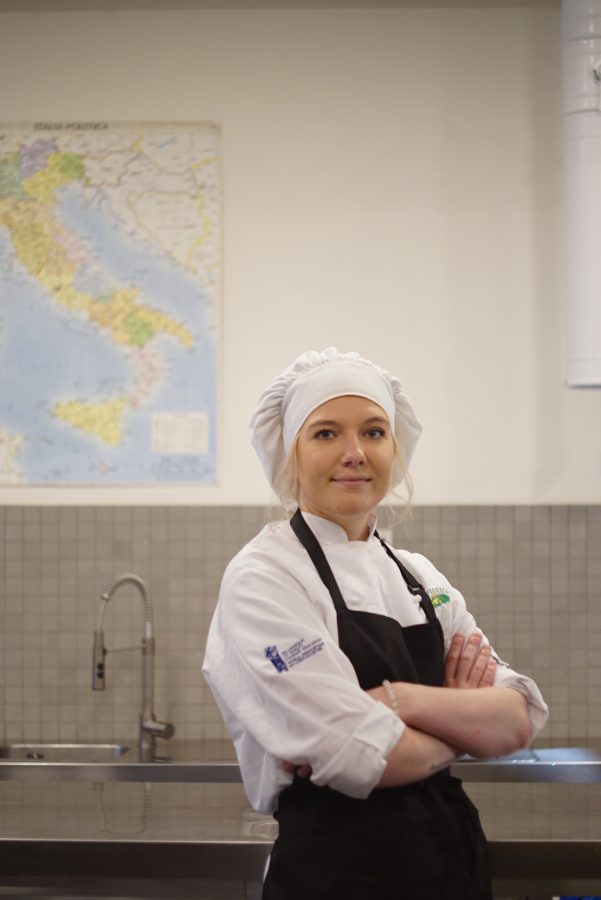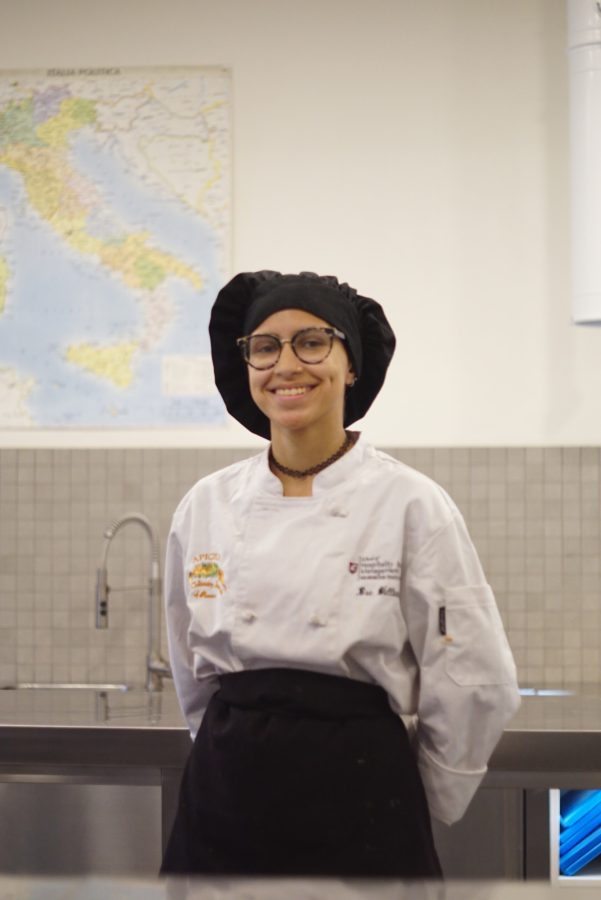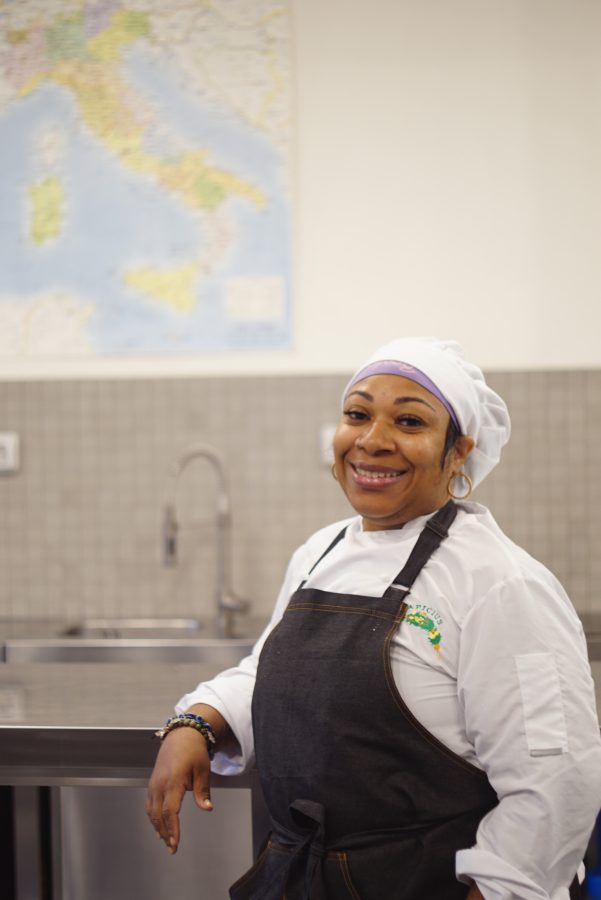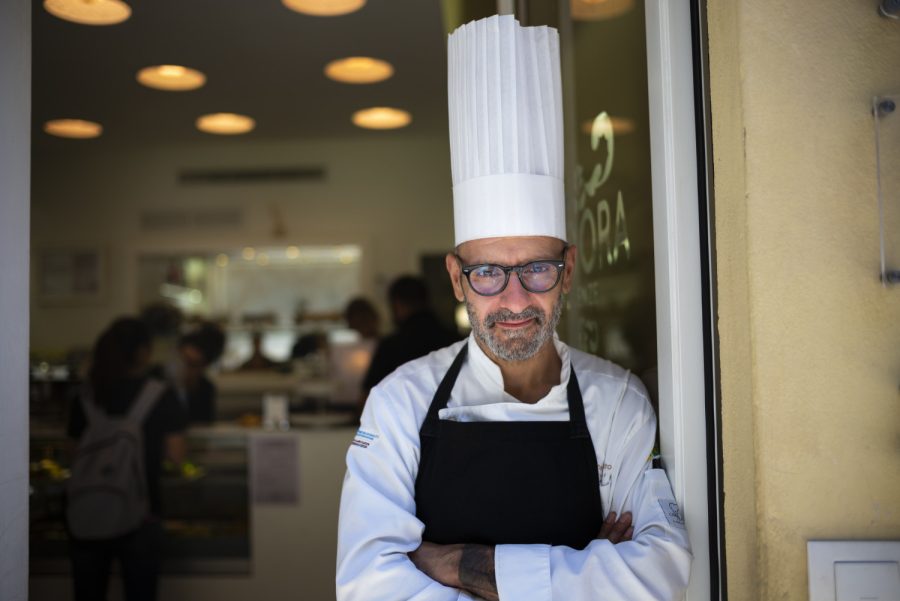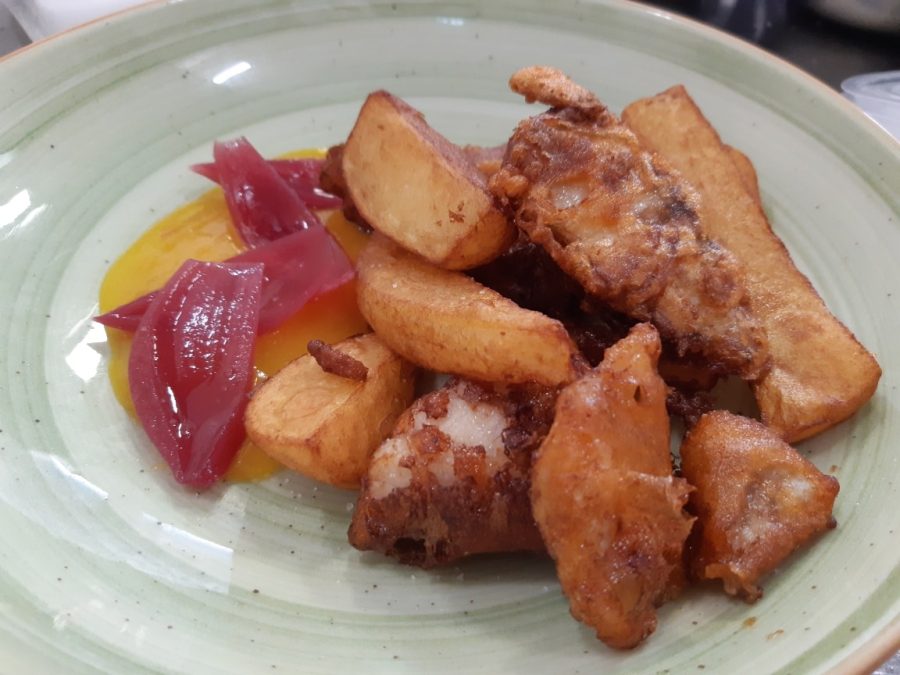written by Savannah McManus
Waves rumble from the turquoise sea before softly crashing onto shore. Beachgoers are fully entranced in nature’s lullaby, hardly able to lift their heads to see the rocky cliffs enclosing their sanctuary. The sublime life is coming to fruition.
Sardinia is home to these luxurious beaches as well as the wife of winemaker Thilo Besançon, who left behind her serene island to join him in San Martino Altoreggi, Tuscany. The name of Thilo’s Vermentino, Senza Mare, translates to “without the sea,” honoring her sacrifice.
Vermentino is a white wine grape variety traditionally grown in Sardinia, but is also produced in Valdarno Superiore, a valley following the Arno River, which flows from Florence to the Sea. The southern slope and sandy loam soil make a perfect habitat for the Vermentino variety to flourish. The winemaking process is simple and natural. They use wild yeasts, minimal intervention, soft pressing of the grapes, big oak vats or older barrels, and stainless steel tanks for the aging process.
Thilo wanted to create a wine that could transport his wife back to those pristine beaches. The floral and fruity notes of wildflowers, apple, and grapefruit playfully assist the acidity to create a well-balanced white wine. When taking a sip, your mouth salivates at the taste, leaving a refreshing and zesty feeling–perfect for a day of lounging under the sun. Due to its crisp profile, it is best paired with delicate dishes. One might enjoy a glass while grazing on prosciutto starters, seafood bites, or pasta dishes with light vegetable-based sauces.
Casanuova or “the new house” was founded in the 1980s when Thierry and Ulla Besançon immigrated to Tuscany from Germany in search of creating a refuge where one can detach from the modern world and reconnect with nature. It was only inevitable that their space would transform into an inn and winery due to their inclination for hospitality. Ulla’s love for food and gardening, and Thierry’s passion for farming and wine, made them the perfect pair. Later in 2012, their son Thilo took over the farm and vineyard from his father after becoming masterful in both agriculture and viticulture.
Casanuova prides itself on its all-organic production since 1988. They believe in treating the environment with respect and kindness, which is clearly displayed through their agricultural practices. They are powered by solar panels and are adamant about recycling. As for the crops, they do not use any herbicides, pesticides, or non-organic synthetic fertilizers of any kind. Everything is harvested by hand at Casanuova and in accordance with the lunar cycle to ensure the highest quality of wine possible.
Organic and sustainable wine has been growing in demand for the past couple of decades, correlated with the societal shift of prioritizing health and wellness. Consumers are more willing to pay for a higher quality product that has been certified free of any chemical use or genetically modified produce. However, achieving an Organic Certification for wine is a lengthy and costly process. First, businesses have to notify the Institute for Ethical and Environmental Certification (ICEA) about their endeavor then undergo a three-year certification process. This includes regular checks to ensure that regulations and standards are being followed. Annual audits are conducted by an authorized Italian control body after the three year waiting period is complete to verify the status. Obtaining this certification is an excellent achievement to receive because it automatically makes your product more marketable.
The Organic Certification warrants sustainability, which is the core identity of the Casanuova businesses. They believe in engaging with only the essential things in life. When you visit or taste their products they hope to reconnect you with the pleasures of the habitual lifestyle. Like the tranquility that comes while sunbathing by the sea.
I invite you to visit Ganzo School Restaurant and try this declaration of love in a bottle. Not only will you be impressed by Casanuova’s “Senzemare” Vermentino, but you will also be captivated by the delicious cuisine prepared by our student chefs.
Wednesday night, where Ganzo hosts a weekly AperiGanzo, is a perfect opportunity to sample what we have to offer. For just 10 euros, you can engage with a wide selection of appetizer-style food and a glass of wine. Let “Senzemare” carry you from the rolling hills of Tuscany back to the whispering shores of Sardinia.
Sources:
● https://repositorio-aberto.up.pt/bitstream/10216/147723/2/606886.pdf
● https://www.casanuova.info/it/chi-siamo/
